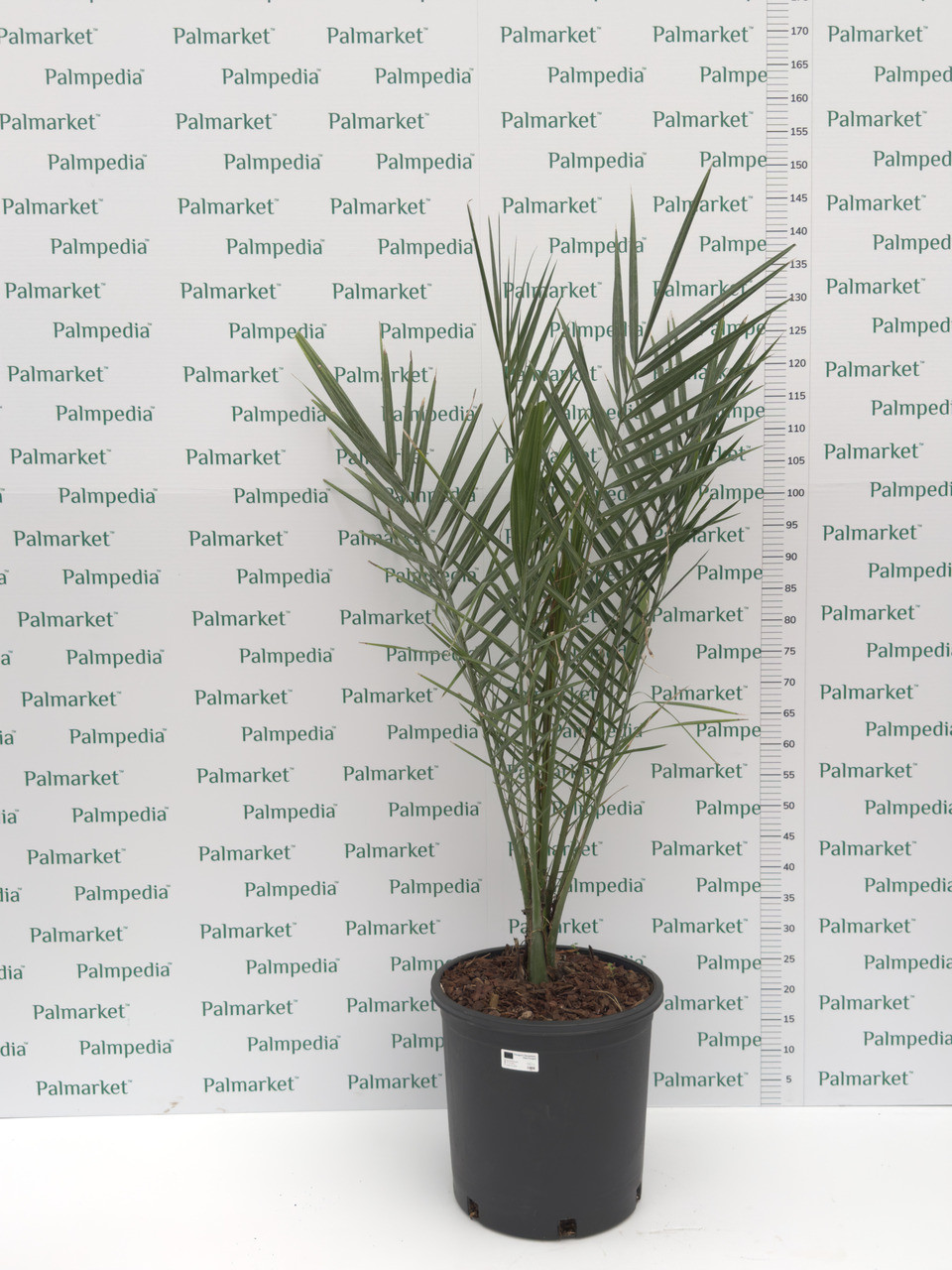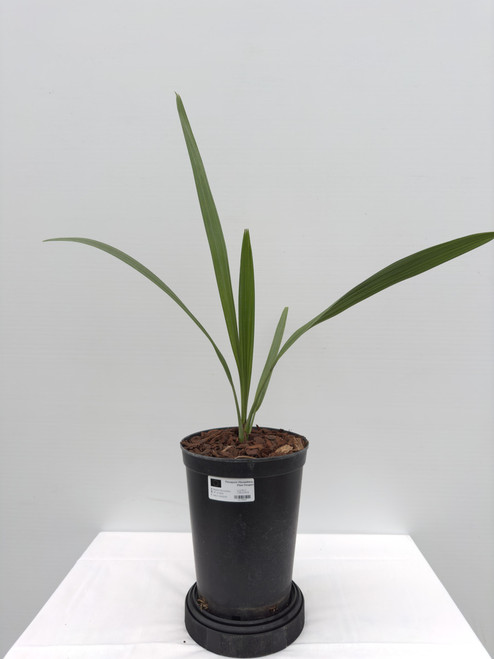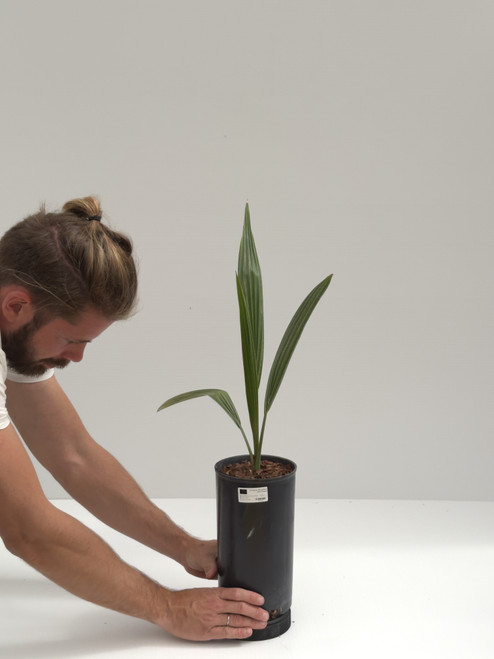Product Description
Habitat and Distribution
Probably native to northern Africa and southwestern Asia; exact natural distribution unknown due to extensive cultivation for at least 8,000 years. Algeria, Benin, California, Canary Is., Cape Verde, Egypt, Fiji, Gulf States, Iran, Iraq, Libya, Madeira, Mauritius, Morocco, New Caledonia, Oman, Pakistan, Réunion, Saudi Arabia, Sinai, Socotra, Somalia, Spain, and Turkey.
Description
Single- or multiple-trunked, pinnate palm to 15-25 m (rarely 30 m) tall. The trunk is 40 - 60 cm diameter, often with a much wider base.
Rounded crown of dark green feather leaves 3-5 m long, with pinnae to 20-40 cm long closely spaced along the rachis. Like all Phoenix, it has long, sharp spines at the bases of the leaves, which are formed from modified leaflets.
The species is dioecious, with separate male and female trees. The fruit are yellow or orange when ripe (turning brown when dried), 3-5 (-7) cm long and 2-3 cm diameter, with a large seed; the fruit pulp is edible and delicious, and is the basis for a major fruit crop of global importance (dates). They are produced on long, densely branched panicles. Editing by edric.
Solitary, or sparsely clustering palm, with several suckering off shoots at base. Stem to 30 m tall, without leaf sheaths to about 40 - 50 cm in diam.; trunk dull brown, marked with diamond-shaped leaf base scars about 10 x 25 - 30 cm. Leaves straight, obliquely vertical in orientation, to 3 - 4 (5) m long; leaf base 15 - 20 cm wide; pseudopetiole 50 - 100 cm long; leaf sheath reddish-brown, to about 45 cm long, fibrous; acanthophylls sparsely arranged, pointing in several directions, to 20 cm long; leaflets variously arranged in 1 - 3 planes of orientation, about 50 - 130 on each side of rachis, stiff, about 40 x 2 cm in length; lamina concolorous, glaucous, drying pale green. Staminate inflorescences erect; prophyll splitting 1 - 2 times between margins, yellow- green with reddish-brown tomentum when young, becoming brown and coriaceous, to 45 x 12 cm; peduncle to about 50 cm long; rachillae to 30 cm long. Staminate flowers crowded along full length of rachillae; calyx a 3-lobed cupule with uneven margin, loosely surrounding the corolla; petals, 3 (rarely 4), creamy yellow-white, fleshy, each 7- 10 x 3 - 5 mm with apex rounded and minutely serrate; stamen about 5 mm. Pistillate inflorescences initially erect, becoming pendulous with maturity; prophyll splitting between margins, yellow-green, about 100 cm long; peduncle yellow-green, 60 - 150 cm, greatly elongating after fertilisation; rachillae about 150 in number, yellow, to about 40 cm long, elongating with fruit maturation. Pistillate flowers mostly in distal half of rachillae, yellow-white, with faintly sweet scent; calyx cupule about 2 - 3 mm high; petals, 3 (rarely 4), about 4 - 5 x 4 mm. Fruit very variable in shape and size, 4 - 7 x 2 - 3 cm, ripening a range of colours from yellow and green to orange, red, purplish- brown to black; mesocarp sweet, thick and fleshy or dry and thin. Seed variable in size and shape but generally elongate, 20 - 30 x 5 - 8 mm, with apices rounded or pointed; embryo lateral opposite raphe; endosperm homogeneous. (Susyn C. Barrow. 1998)/Palmweb.
Culture
Date Palms are grown in extensive orchards throughout southwestern Asia and northern Africa wherever adequate groundwater supplies are available. Major producers include Algeria, Egypt, Iran, Iraq, Libya, Morocco, Pakistan, Saudi Arabia, Tunisia. More recently, orchards have been established in the New World in Mexico and southern California.
It is also grown as an ornamental tree; it is popular with people starting growing palms for the first time due to the very easy availability of seed; the stones from shop-bought dates (even dried dates) will grow readily. As an ornamental plant, it is however less attractive than many other palms, with sparser, more rigid foliage (less graceful) than the related Canary Island Date Palm Phoenix canariensis.
It will tolerate frosts down to about -10°C but only for brief periods, and cannot tolerate cold wet winter weather as well as P. canariensis; this makes cultivation outdoors in e.g. the British Isles impossible, unlike P. canariensis which can be grown there in milder areas.













